“Perfectionism is a disease. Procrastination is a disease. ACTION is the cure.”

As you consider building your own minimum viable product, let this simple rule suffice: remove any feature, process, or effort that does not contribute directly to the learning you seek.”
— Eric Ries
This amazing quote is itself self-explanatory about what does an MVP (Minimum Viable Product) means, and hence I started this blog with this quote to give you a broad picture of what an MVP means.
Basically, the idea of an MVP is to get user feedback before developing the final product. This feedback helps you avoid failure.
In today’s IT industry, developing an MVP is common practice. It’s useful in the planning of a project or startup. If you’re planning to launch your own product or a project, read to learn more.
So what exactly is this “MVP”? Any guesses!!
Well! The term, Minimum Viable Product was coined and defined by Frank Robinson in 2001, and it was later popularized by Steve Blank and Eric Ries.
Keeping the definition very simple to understand- A minimum viable product (MVP) has a bare-bones design which is an essential part of product development. While it’s not your end goal, the MVP is an important stepping stone to learning what you need to know to develop a product that will perform well in the marketplace. The goal is to provide immediate value to your users while minimizing risk and development costs — then to leverage customer feedback to continuously improve.
“The MVP has just those features considered sufficient for it to be of value to customers and allow for it to be shipped or sold to early adopters. Customer feedback will inform future development of the product.”- Graffius, Scott M. (2016). Agile Scrum: Your Quick Start Guide with Step-by-Step Instructions. North Charleston, SC: CreateSpace
The said quotes have been taken from his book – Agile Scrum: Your Quick Start Guide with Step-by-Step Instructions. North Charleston, SC: CreateSpace.
It’s then tested on the market to see if it has the potential to succeed.

To perform this initial testing, the product only needs the most essential functionality. Anything beyond major functionality is not included. The MVP version is a tool to help determine the product’s potential. The MVP method can be used to develop any product, including mobile apps and websites.
Three Key Characteristics of a Minimum Viable Product
- It has enough value that people are willing to use it or buy it initially.
- It demonstrates enough future benefit to retain early adopters.
- It provides a feedback loop to guide future development.
Why is a minimum viable product important?
An MVP helps you get early data that confirms users’ interest in your product. Positive results at the MVP phase give the green light to develop the full version.
By creating and testing a minimum viable product, you can:
- Save time and resources by making sure you’re investing in a project that’s likely to be successful.
- Check whether the product is appealing to potential users.
- Find out which trends you can take advantage of when developing the full version of the product.
- Aсquire a potential user base and find early adopters.
- Save time and money on developing the final product.
- Attract investors earlier.
- Build the product fast
- Build the product with minimum effort
- It enables you to gain understanding about your customers’ needs and interests without actually developing the full product
- Reduces the chances of building a product that might fail.
- Learn what resonates with the company’s target market and what doesn’t
What you need to build a Successful MVP
The checklist of what is required for a successful MVP can be distilled into three categories:
- The goal, defined as the one major problem you wish to solve for your intended customers
- A user flow process that shows the process and steps your customer will take while using your product
- A prioritized feature list that represents the minimal functionality required to solve your customer’s problem
Let’s look at what’s involved in each of these categories — the action items for building an MVP that succeeds in the marketplace.
The Goal
The first step is to clearly outline the problem you’re going to solve and who you’ll solve it for.
1. Identify Your Target Market: First, decide who you’ll target and dig into understanding their needs and challenges. This can be done through interviews and market research. Additionally, investigate competitor companies and products to get a thorough understanding of what’s currently available in the market and how customers are responding.
Some questions to ask:
- Are there opportunities for products or features not currently being met?
- Is there a benefit to improving upon what is currently available?
- What value will this product offer my customers, and what problem does it solve?
2. Decide What Problem You’ll Solve: After you understand the needs and challenges of your target market, select one major problem you wish to solve with the MVP. You want to be sure there’s a business opportunity and a solid value to your target audience of intended customers.
3. Create a List of Long-Term Goals for Future Versions : As you do your research, you’ll find other problems that need to be solved and uncover other features that would benefit your users. While you can’t focus on them now, keep a list of these items. Additionally, you’ll want to establish your long-term goals for the MVP. What’s your success criteria for the product? Having a strategy, even though it will flex and change as you gain customer feedback, will help ensure value to your company as well as to your customers.
A User Flow Process
The next step is to map all of the steps each user type will take while using your product.
4. See from the User’s Perspective: Consider how each user type will interact with your product. What tasks do they need to accomplish? What environment will they be using the product in? Look with fresh eyes from the perspective of each user type.
5. Keep the Experience Simple: Focus on keeping each task as simple to accomplish as possible. The fewer clicks required to complete an action, the better. If the product isn’t convenient to use, people won’t use it.
6. Define Your User Flows: Define the user flow for each task that each user type will be completing. To do this, outline the stages of each process and then define the steps needed to reach the main objective for each process.
A Prioritized Feature List
In order to build the simplest functioning version of a product effectively, identify the core functionality that the product cannot do without.
7. Identify the Core Features: There are many frameworks for determining which features should go into V1(version 1) and which should be saved for later versions. Some of the more popular include:
- Prioritization matrix, with axes that include items like urgency and impact, risk and value, or effort and impact
- The MoSCoW method, splitting features into must have, should have, could have, and won’t have
- Story mapping, where you have a series of categories that represent each stage of the user’s journey on a horizontal axis, and vertically under each of these, place the features in order of priority
Regardless of the method, the goal is to decide on a prioritized list of features required to release the product. Anything not determined to be a priority from the user’s perspective can be reserved for future releases.
Build, Measure, and Learn
After Launching your MVP it is imperative that you collect feedback from your users. Users tell us where the product is lacking and ensures market validation. This will help you generate new ideas grounded in user behavior research which will shape the subsequent versions of your product. It is important to continue to test, learn and measure, and then test again until the product is finalized. Since you built the MVP with just enough features to satisfy early customers, this feedback is essential to successful future product development. Customer feedback can be provided directly, through interviews and surveys, or indirectly, through analyzing traffic, sign-ups, and engagement.
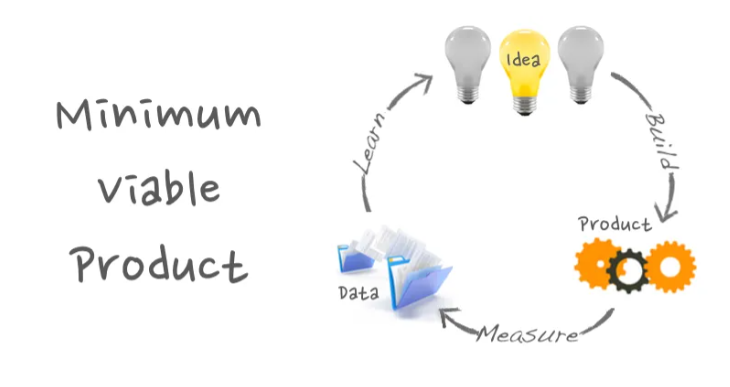
Thus, The original definition has evolved into: the smallest thing that would help you to start “build/measure/learn” loop. This means that MVP could potentially be anything, a post on a blog, a landing page, an explanatory video, a customer interview…and so forth.
Ash Maurya, author of the book Running Lean sees MVP differently:
“A Minimum Viable Product is the smallest thing you can build that delivers a customer value (and as a bonus captures some of that value back).”
According to Maurya’s definition, Minimum Viable Product is actually… a product. Landing pages, customer interviews or live demos are ways that help you to define the scope of your MVP, but they are not Minimum Viable Product themselves. But even with this definition, MVP is definitely NOT a dream product; it doesn’t have all the features you might imagine, but offers customers some defined value; and has a real shape, which can be metaphorically ‘grasped’ by the customer.
The Four Parts of a Minimal Viable Product
So an MVP is more than a product, it’s a route to learning.
We build an MVP in order to take a small step towards Product/Market Fit and each step must be a complete Build-Measure-Learn loop.
For an MVP, this means we need a minimum of four parts:
- Customers
- Value Proposition
- Channels
- Relationship
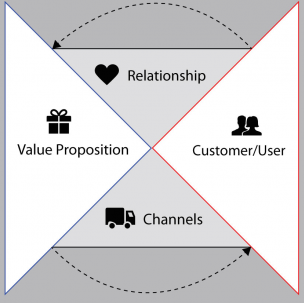
Customer relationship is about the Customer delivering feedback to us so we can modify the Value Proposition.
This gives us a loop that roughly corresponds to Build-Measure-Learn.
We’ll have to:
- Build our Value Proposition and Channels,
- Measure our Channel’s effectiveness and our Customer’s reactions,
- and Learn from our Relationship to come up with a better Value Proposition
Power of the MVP
The MVP process shortens the learning cycle to get to the right version of the product as quickly and efficiently as possible.
- Start with a simple product that solves one major problem for intended users. It’s tempting to want to solve all the problems you’ve uncovered. But for the MVP process to work, you need to pick a target group of users (market segment) and narrow your focus to one major problem you can solve effectively.
- Build an early version of the product that solves your focus problem quickly and completely. Both adjectives are important here: quickly and completely. Some companies misunderstand “minimum viable” as “bare minimum needed to ship.” But if customers hate your MVP because it’s ineffective, the process will fail you.
- Gather actual feedback from real customers. Feedback is the gold you’re digging for with your MVP. You’ll need to get out of the office, talk to customers, and learn:
a)What part of your product vision initially captured your users’ attention
b)Does the new product truly solve the problem?
c) What’s making your product difficult to use?
d)Have users found another company that’s solving this problem in a better way?
e)What related problems do customers need to solve?
- Use that feedback to iterate and solve bigger, more complex problems. Based on the input you’re getting from actual users, improve and build upon your original product design.
- Share your vision — continually. Customers should know where you eventually intend to take the product. As you’re marketing your MVP, communicate your ultimate vision. Get users excited about where you’re going, and motivate them to continue the journey with you.
How to market the MVP?
Now that we’ve seen what is a Minimum Viable Product and what is it’s importance and what are some common misconceptions related to it, now’s the time that we see how can a startup/organization market the MVP so that it reaches more and more people
- Social media influencers — A startup can pay small amounts to social media influencers to advertise their product. For example, when a person having hundreds of thousands of followers on Instagram says that this product is good and public should use it, people would actually try it out, because people believe him/her
- Writing blogs — Writing blogs about why should people use a particular product and its importance is one of the best ways of marketing the product. Many people read blogs and reading a blog about some product helps build trust
- Meetups and events — Product specific free meetups can be conducted which would help people learn more about the product
- Customer Reviews — Asking out the customers to leave reviews and feedback’s. If the customer really likes the product, he will also tell about the product to the people he knows, which is called the “Word of mouth” publicity, which is very handy when it comes to brand building
- Video content marketing — Many influencers make video content daily. It helps build trust and a regular audience, and in turn helps build the brand
- Pre order (or, early bird) discounts — Giving discounts to people who buy the product at an early phase
- Email Marketing — Email marketing has become a necessity for every business nowadays, no matter how small or big it is
- Sponsored Ads — Platforms like Google AdSense and Facebook/Instagram ads helps out product reach more and more people
- Marketing campaigns — Physical marketing campaigns are a great way of building trust and reaching out early customers
- Other forms of social media publicity…
Some Common Misconceptions about MVP
- Most of the people believe that an MVP must contain every important feature, whereas (although recommended), but it is not necessary to include every feature. The MVP should contain the features that implement the core idea of the startup
- Not proper customer feedback. Many people think that an MVP should not be based on any customer recommendation and feedback, and it should be an implementation of just the company’s internal “minds”, whereas, even an MVP needs to be acceptable by the customer, and for this to happen, it is highly essential that one understands customer needs and requirements, which includes a proper market study, study of customer needs and demographic research, etc.
- Many people think that MVP is only for customer focused startups, which is not true. MVP can be valuable for any sized organization and company
- Another misconception about building an MVP is that people think building an MVP is enough for a startup to get customers and start making money, whereas, the reality might be completely opposite. Building an MVP is just the beginning of the story, it is not wise to confuse it as an end goal
- “If MVP is not successful, your startup will die”, this misconception generally arises along with the previous one, when people think that building an MVP is their goal, they start expecting huge results out of it, whereas, an MVP might fail to impress customers, this, in no way, means that your idea is bad, this just means that you need to think on the features and implementation a little more
MVP Examples of Famous Startups:
“Think of some successful startups. How many of their launches do you remember?”
Let’s dig into some examples of minimum viable products that evolved into valuable product-driven businesses.
Google Website:
Initially, Google was nicknamed “BackRub” because the technology checks back links to determine a site’s importance. Their website just had the logo and the search bar. There was no “design” in a typical sense. The following name “Google” is a play on the word “googol”, the mathematical term for a 1 followed by 100 zeros. In September 1998, the same month that Google was incorporated, its founders Larry Page and Sergey Brin set up office in Susan Wojcicki’s garage in Menlo Park. Susan Wojcicki joined Google in 1999 as the company’s first marketing manager.
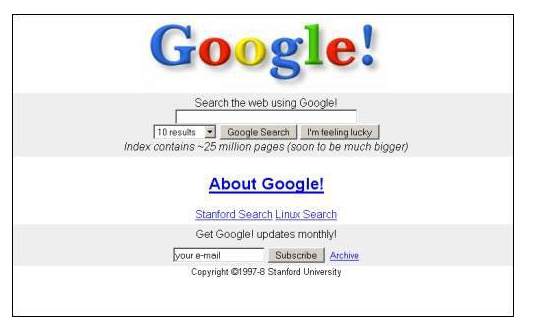
Amazon Website:
Amazon started in 1994 as an online marketplace to sell books. And where is it now? Today it is the most valuable company in the world.

The Instagram App
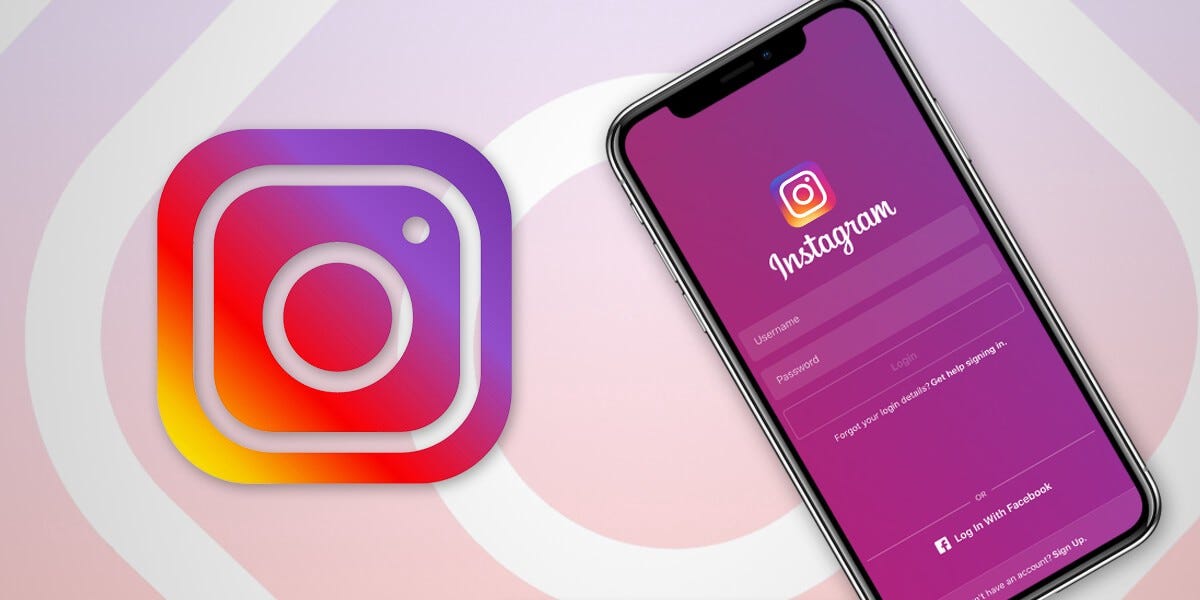
A good and real-world example of MVP can be seen in the development of the Instagram app. Initially, the MVP was focused on photo filters only, i.e. users could choose from the given filters and modify their image. Users liked the product and slowly it turned into the social networking app as we see it today.
Rome wasn’t built in a day
Everyone knows it takes a long time to build great products, and here are some stories of how some of today’s major startups.
The story of Instagram

The story of Airbnb

The story of Pinterest…

The story of Angry Birds…
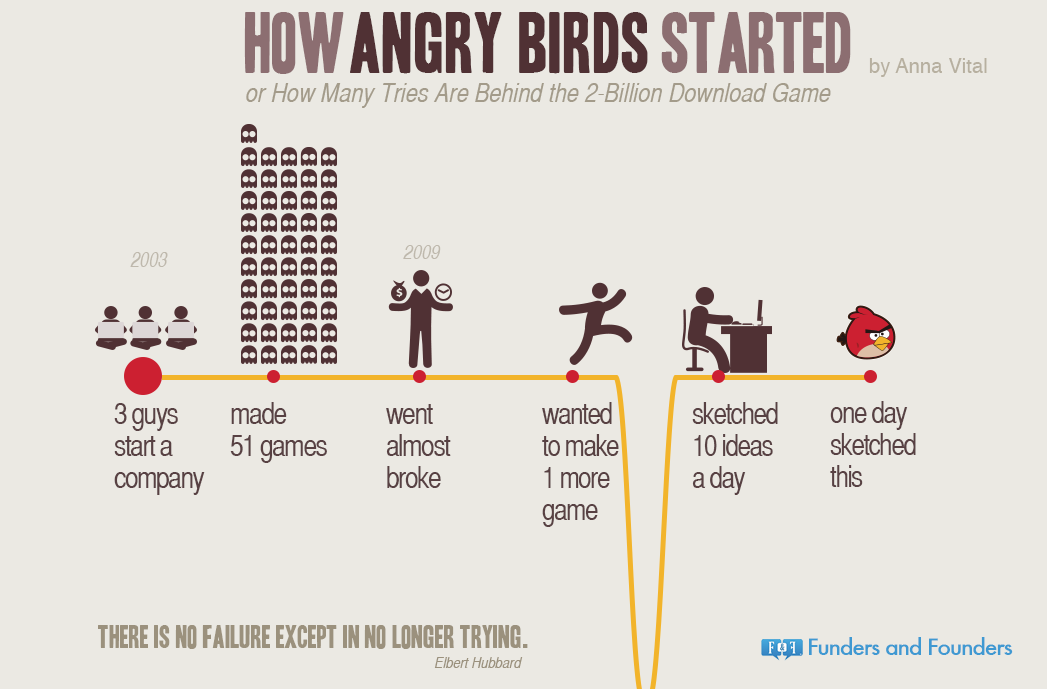
So it’s quite clear that great products require efforts and time, and it is not a good decision to give up on your idea even if the MVP fails. I know these stories were a little off topic from our major point of discussion, i.e. The Minimum Viable Products, but seeing these images will give you a great boost of motivation in case you are having a hard time running your startup.
The moral of the story: don’t name your company BackRub. Also, don’t worry about making something pretty, worry about making something people love. As Reid Hoffman (the founder of LinkedIn) once said, “If you are not embarrassed by the first version of your product, you’ve launched too late.”
Takeaways:

MVP is the version of a new product that allows a team to collect the maximum amount of validated learning about customers with the least amount of effort.
Whenever one wants to build a business or a startup, he/she comes up with an idea. An MVP can be thought of as a minimal manifestation of that “base idea” on which your startup is based. The idea is to realize the idea very fast and get into the market, and then based on continuous customer feedback, keep improving the product and add only the features which the customer really wants.
Establishing a shared understanding of MPV and the right approach enables you to prioritize the right things. You can proceed to maximize the benefits of your minimum viable product approach at each iteration. With focus, it is possible to more effectively navigate the entire product development life-cycle and make more informed decisions.
Design is functional, a means to an end. Design is improved in “Iteration” So, Design= Function+ Aesthetics (In other words iteration leads to liberation’s”)
Each prioritization approach has its place and can prove to be immensely beneficial. But, there are no shortcuts when it comes to prioritizing the right things. The process of gathering continuous feedback and refining your product or service is the core product management. This practice is not only about creating something customers need or even love. It is a business practice that delivers outstanding solutions.
I hope this blog gave you a good idea of “Minimum Viable Product”
If you liked this article, please leave a comment and share your feedback; it’s what keeps me improving.
Looking forward to your comments and review on it.
Thank You for reading this article.
Thanks and Regards,
Neha Sahay
![]()



1 Comment
Corina · October 1, 2021 at 1:21 am
I do trust
all the ideas you’ve presented for your post. They
are very convincing and will definitely work.
Still, the posts are too quick
for starters. May you please prolong them a bit from
subsequent time?
Thanks for the post.